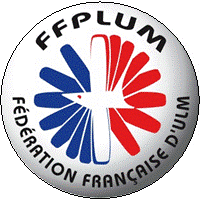We support you in the best possible way to carry out your sponsorship projects and multimedia partnerships.
We offer a range of volume discounts to match the needs each advertiser and each campaign.
Please do not hesitate to get in touch using the contact form.
They reflect our offer of the best approach for our partner publishers, advertisers and media agencies.
In 2009, the FlyMedia logo incorporated a PAPI (precision approach path indicator), a symbol made up of a horizontal bar containing four circles—two white and two red—which signals that an aircraft is on the correct approach slope.
In 2019, FlyMedia opted for a new logo using a VASIS (visual approach slope indicator system), which comprises one horizontal bar placed on top of another, also with two white circles and two red circles to signal that an aircraft is following precisely the correct approach slope.
A precision approach path indicator, commonly referred to by the acronym PAPI, or a VASIS is a visual guidance instrument located at the side of an airfield or airport runway, 300 to 450 m from the runway starting point. It helps aeroplanes to perform an approach properly (in the vertical plane) by indicating whether they are on the correct glide slope (rate of 5% or 3°). This descent rate is a major factor in ensuring the aircraft’s safe approach and landing.
The PAPI and VASIS path indicators operate as follows:
General aviation is an umbrella term for all civilian aerial travel activities excluding commercial transport and falling under the categories of aerial sports (aerobatics, gliding etc.), leisure (tourism), aerial work (rescue, medical evacuation, pilot training, agricultural spraying, fire-fighting, photography and cartography, aerial surveillance by border control or police etc.), business aviation etc.
Contrary to public aerial transportation flights, which are generally carried out under instrument flight rules (IFR), a large proportion of general aviation traffic is conducted according to visual flight rules (VFR). In this case, the necessary ground facilities do not require a great deal of sophistication and the flight can take place without air traffic control. Similarly, certain airfields are exempt from control.
VFR
visual flight rules represent the simplest and most unrestricted flight regime, whereby prevention of collisions is based primarily on the “see and avoid” principle. They form a part of the rules of the air as set by the ICAO (with variants existing in national regulations). This regime is based on the very first technique used in aeronautical history, which also requires the smallest amount of instruments. VFR flying is only authorised in cases of visual meteorological conditions (VMC). The pilot most often requires a minimum visibility of 1500 to 8000 m and must stay out of clouds (at a minimum distance of 1500 m horizontally and 300 m vertically). Specific conditions apply to visual flight above clouds (VFR over-the-top or VFR OTT), in low visibility (special VFR or SVFR) and flying by night (night VFR or NVFR).
They differ from instrument flight rules (or IFR – instrument flight rules) whereby prevention of collisions relies on air traffic control and compliance with specific trajectories. IFR flying can take place at practically any time except take-off and landing, during which minimum conditions are usually imposed. The aircraft must be equipped with a greater amount of instruments and the pilot requires a qualification to use the instruments.
IFR
instrument flight rules refer to a flight regime whereby prevention of collisions relies on air traffic control and compliance with specific trajectories. They form a part of the rules of the air as defined by the ICAO. Aided by data indications from on-board instruments and directives received from air traffic controllers, pilots are required to:
They differ from visual flight rules whereby prevention of collisions is based primarily on the “see and avoid” principle. IFR flying enables pilots to fly in instrumental meteorological conditions (IMC), i.e. when visual meteorological conditions (VMC) are not met, e.g. flying in clouds.
Un planeur ultra-léger motorisé, couramment appelé ULM, est un aéronef ultra-léger muni d’un moteur et dont les conditions de navigabilité spécifiques sont simplifiées par rapport à la certification d’un avion léger et soumis à une licence de pilotage plus simple que la licence de pilote privé. Les ULM sont autorisés à décoller et atterrir hors des aérodromes, et nécessitent des distances plus réduites que les avions légers, bien que les plus performants se rapprochent de ceux-ci.
On désigne par avion les aéronefs certifiés par l’OACI, par opposition aux ULM tels que définis ici. Ni mieux ni moins bien, la philosophie des deux catégories est différente et correspond à un usage différent :

An ad sales house, also known as an ad sales network, is an enterprise that brings together advertisers wishing to place ads and media companies seeking to rent out advertising space and thus make optimal use of their audience. The ad sales house functions as an intermediary in representing companies that sell advertising space.
Its main function is to pool together the advertising space of various media publishers and fill this media advertising space with ads created by advertisers with an interest in their audience.
The term “ad sales” is used generically and does not refer to specific types of media. As such, it may be broken down into two categories:
127, Notre Dame des Champs St. 75006 Paris France
+33 (0)1 40 46 80 33